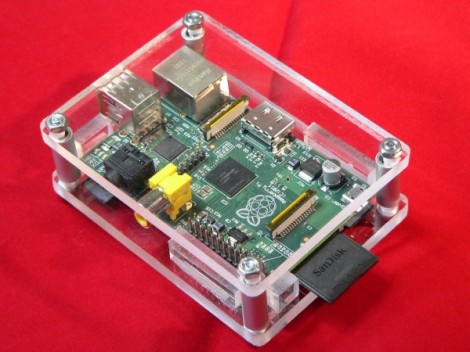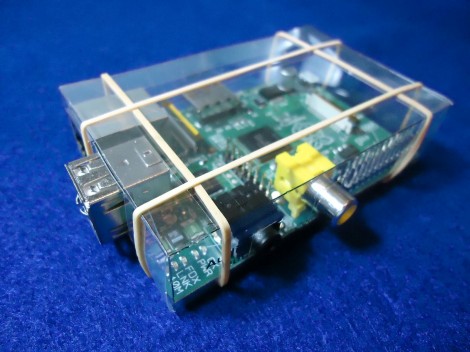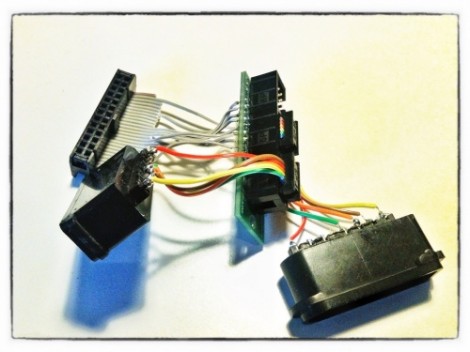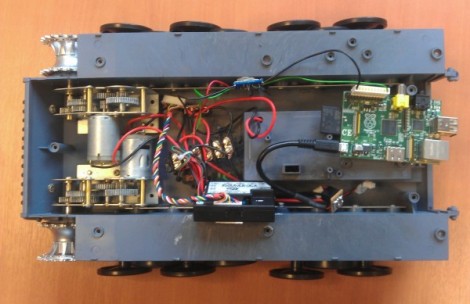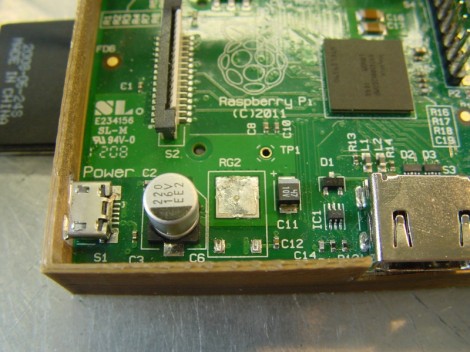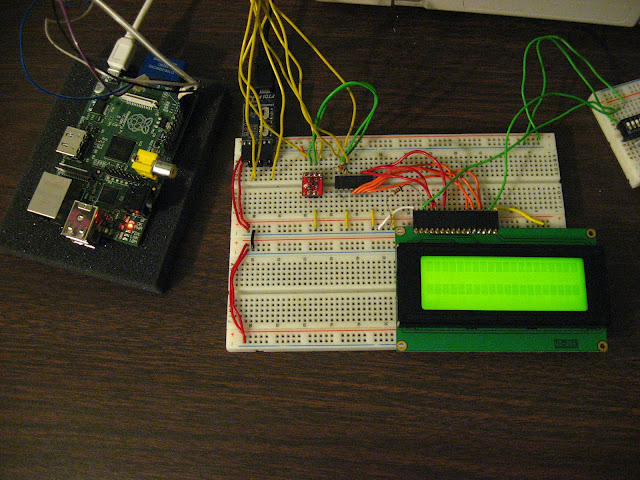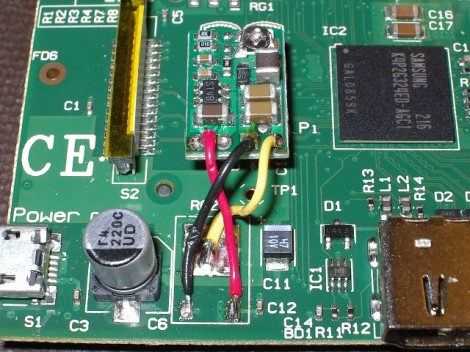
[Karl Lunt] is working to slim the Raspberry Pi current draw as much as possible. The first step in his journey was to replace the linear voltage regulator with this switch mode version. It’s a step-down voltage regulator circuit with a tiny footprint and a matching price tag (about $10) made by Pololu. It’s small enough to be mounted in the empty space between the LCD ribbon connector and the main processor.
The project was based on the hack we saw at the end of June. But we give much more credit to [Karl] for removing the old part in a safer way. He clipped the two small leads on the bottom of the old part, then used a beefy iron to sufficiently heat the large pad before removing the body of it. With the old part out of the way it’s just a matter of connecting the three wires in the right configuration.
This cut consumption by about 50 mA. He’s hoping to do more by removing the on-board LEDs. His goal is a draw of under 250 mA in order to make it last a reasonable amount of time when running from batteries.

